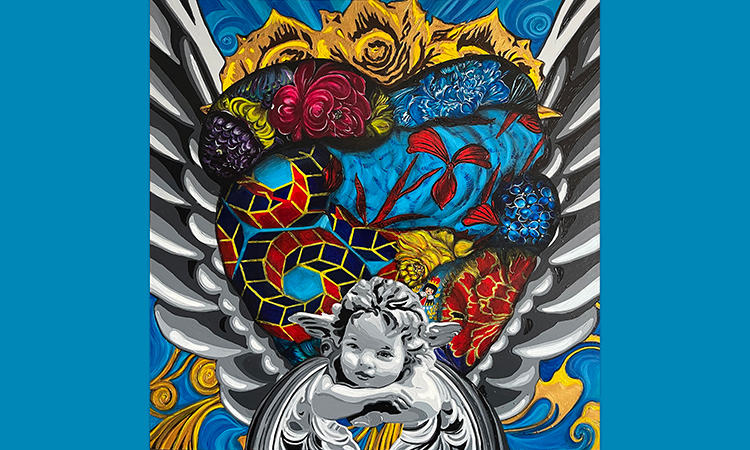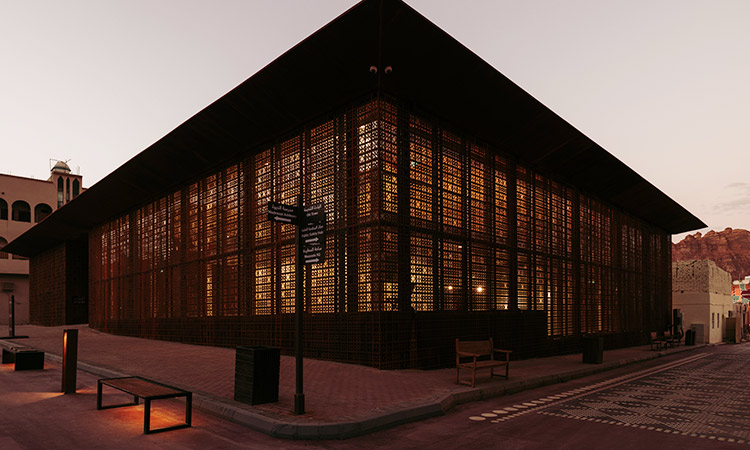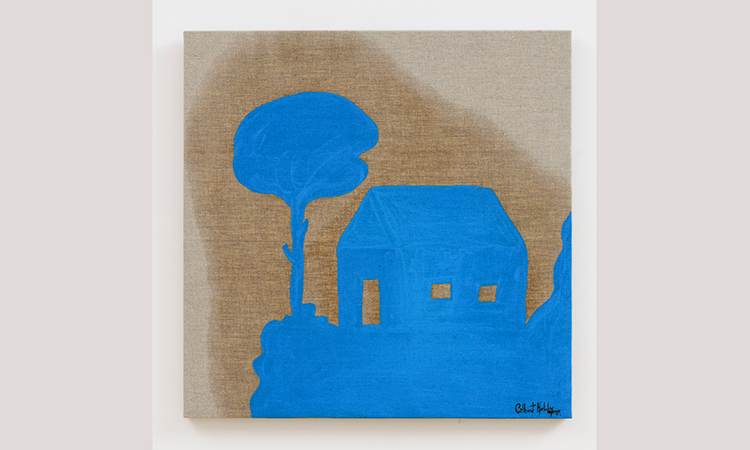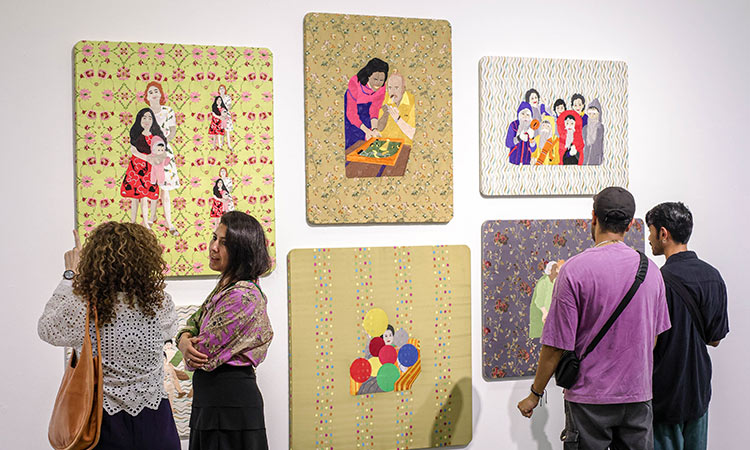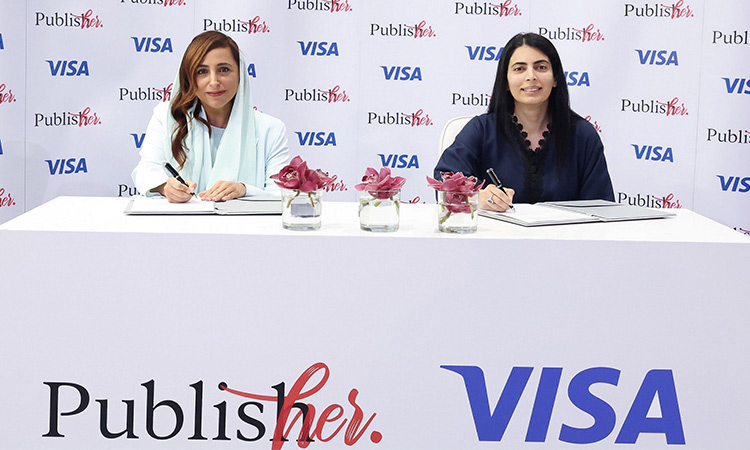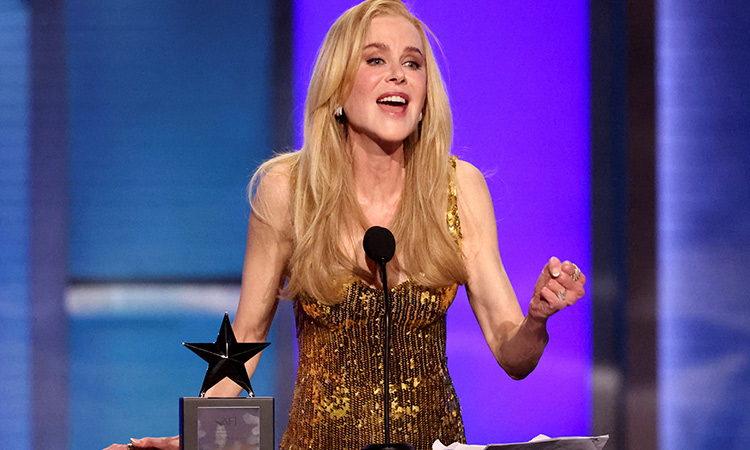Zawyeh Gallery’s show on Yazan Abu Salameh is now virtually over
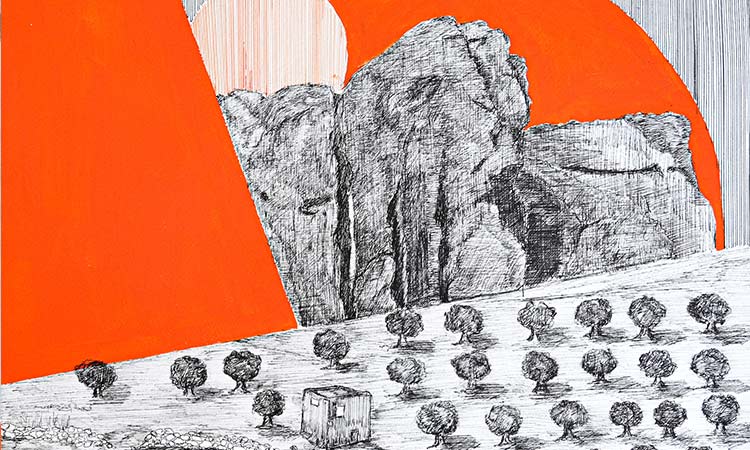
A rock blocks the rays of the life-giving sun from reaching the olive grove.
Muhammad Yusuf, Features Writer
Zawyeh Gallery has concluded (till Aug. 30) its first and inaugural virtual exhibition titled Bending Toward the Sun by young Palestinian artist, Yazan Abu Salameh.
Usually exploring urban geographies in his work that reflect the remnants of childhood memories, concrete blockades and watch towers, in the exhibition, the artist attempted to navigate barriers to freedom by depicting enormous suns, gazing on concrete structures as representations of military occupation.
The exhibition attempted to pound on their concrete walls as a legitimate cry for justice and a bid to break out of confinement boxes.
In Bending Toward the Sun, plants bent towards the sun to seek light, and their stems grew longer as they tackled obstacles on the way.
It was the artist’s attempt to navigate barriers to freedom. The sun dominated Abu Salameh’s artworks and appeared in the backgrounds overlooking structures of concrete. The melancholy of the urban environment and the overwhelming presence of concrete as a byproduct of military occupation, overshadowed his artworks.
He worked with ink, creating an effect of the overwhelming claustrophobia resulting from the separation wall and similar military structures. He also presented boxes packed with congested buildings having little white windows, as a depiction of the densely built-up environment in the Palestinian towns that are restricted from natural expansion. The boxes were left partly open as if the towns fiercely desired to escape confinement. The cardboard texture and colours built a striking connection between the sun in the sky and the boxes as well as the separation wall, as if a conversation between these elements were taking place.
READ MORE
Filmmaker Ursula Manvatkar has many arrows in her creative quiver
Jennifer Lopez slams wedding attendee who sold private video from ceremony
Taylor Swift wins top MTV video award, announces new album
Although the sun is the source of light and symbolises freedom, its scorching heat is fatal. Abu Salameh used bold orange colours across his works, to present enormous suns with terrible heat. The huge orange orbs dominated his works. Some of the big circles were empty, while other circles contained figures or shapes; yet the focal points of the artworks were the enormous suns.
He also used deep orange colour in the backgrounds, creating a sort of uncomfortable contrast with dull greys. In one artwork, the sun looked like an enormous fiery ball rolling over the landscape towards a field of olive groves.
Abu Salameh’s recent series of artworks is inspired by Ghassan Kanafani’s novel ‘Men in the Sun’. While in Kanafani’s work, the protagonists feared beating the walls of the tank in which they were hiding and consequently suffocated, Abu Salameh painted his version of the novel, in the form of children pounding the tank from the outside.
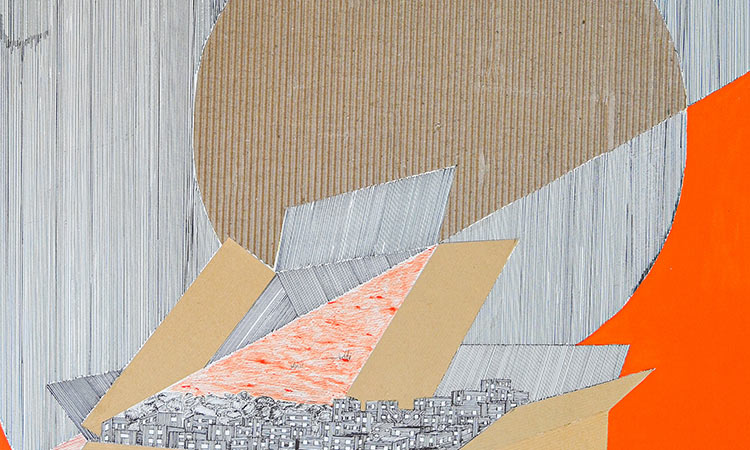
Men in the Sun follows three Palestinian refugees seeking to travel from refugee camps in Iraq, where they cannot find work, to Kuwait, where they hope to find work as labourers in the oil boom.
They decide to arrange for travel with a lorry driver, a Palestinian man. The men are forced to ride in the back of the truck as they move across the desert on their way to Kuwait. At several check points, they hide in a large, empty, water tank in the stifling mid-day heat, as the driver arranges paperwork to get through.
At the last check point, within easy driving distance of the travellers’ ultimate goal of Kuwait, the driver is held up by check point bureaucrats. Once he is able to drive past the check point, he opens the tank to let the men out, only to find they have died.
In a rare attempt to depict the Palestinian landscape, Abu Salameh drew a scenery of olive groves. In the background lay a huge rock, almost as tall as the sun, as if it formed a barrier that stopped the sunlight from reaching the fields.
The fields were painted in black and white (using ink), while two suns appeared in the background or perhaps a sun, and a moon, different in sizes and coloured in deep orange. Abu Salameh’s figures always looked up to the sky, whether confined between walls or standing in rows at checkpoints. The artworks left the viewer with a sense of the necessity of demolishing barriers that stand between us and our suns. Ziad Anani, Zawyeh’s Director, talked about the new approach the gallery is taking. He said: “We are planning to organise virtual exhibitions throughout the year along with physical exhibitions in our spaces in Dubai and Ramallah, Palestine.
“We are looking forward to providing the audience with an amazing virtual experience as well as the opportunity to view the exhibitions from different parts of the world”. He added: “The technology of virtual exhibitions has developed tremendously in the past years and as a gallery, we are keeping up with these developments and bringing the best of experiences to our art collectors.
“The technology we use grants the audience a high-quality viewing experience that is very close to reality. Visitors can now tour our venue and see the details of the works including having a close look at the materials, the captions of the artworks, price lists, etc. in a simple and convenient way.”
Yazan Abu Salamah was born in 1993 in Jerusalem and studied Fine Arts at Dar Al-Kalima College in Bethlehem. He participated in several group exhibitions in Palestine, Jordan, and the UAE, including Ramallah Art Fair (2020 & 2021), and Art Dubai (2021), as part of Zawyeh’s offering. His first solo exhibition was held at Zawyeh Gallery/Dubai in 2021.
